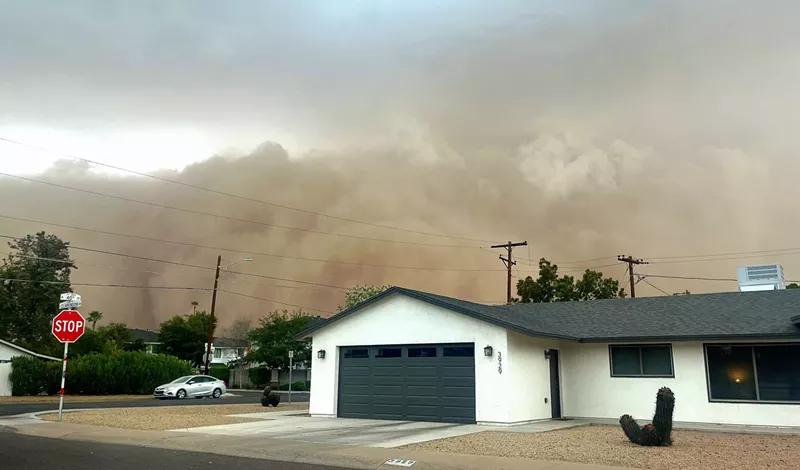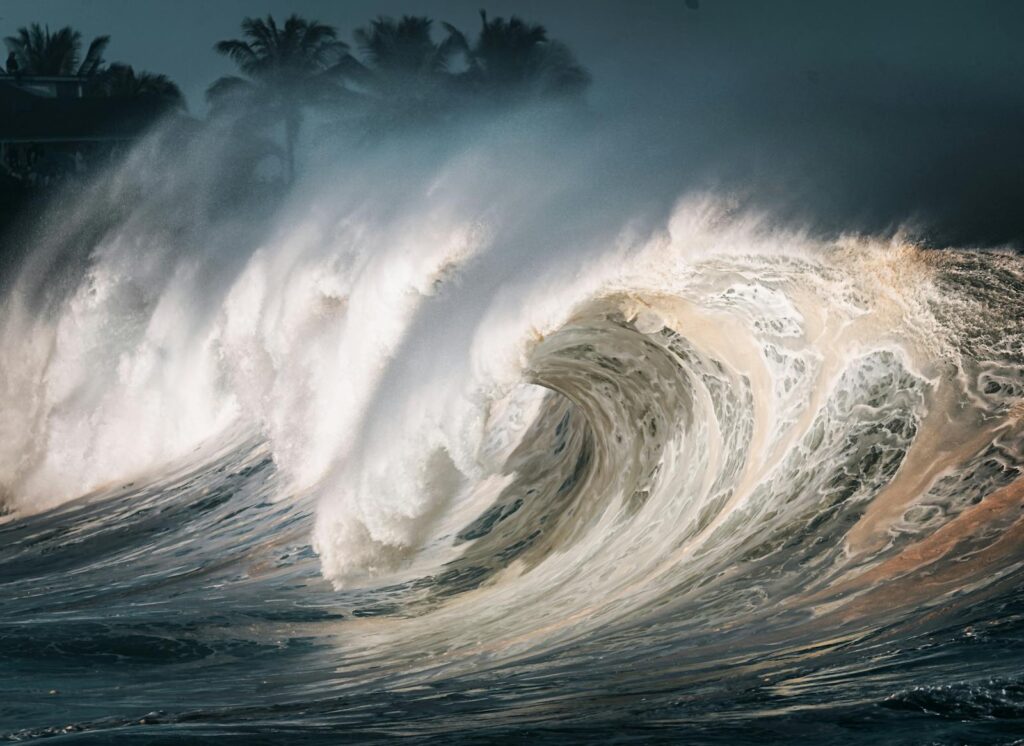
Imagine walls of water, some towering over 100 feet high, crashing onto shores with catastrophic force. Tsunamis are monstrous waves triggered by underwater earthquakes, volcanic eruptions, or landslides, and they have left a lasting mark on human history. These colossal forces of nature remind us of the immense power held within our planet.
While tsunamis are relatively rare, their sheer power and destructive potential are awe-inspiring. These monstrous waves can make their way thousands of miles across the ocean, overtaking coastlines and causing widespread destruction and loss of life. Their impacts reshape landscapes, societies, and even influence scientific understanding.
In this article, we journey through the chronicles of history to explore some of the largest and most destructive tsunamis ever recorded. Brace yourself for tales of nature’s fury unleashed, as we delve into the causes, impacts, and profound lessons learned from these catastrophic events that span centuries and continents. We begin our exploration with seven events that fundamentally altered the course of affected regions.
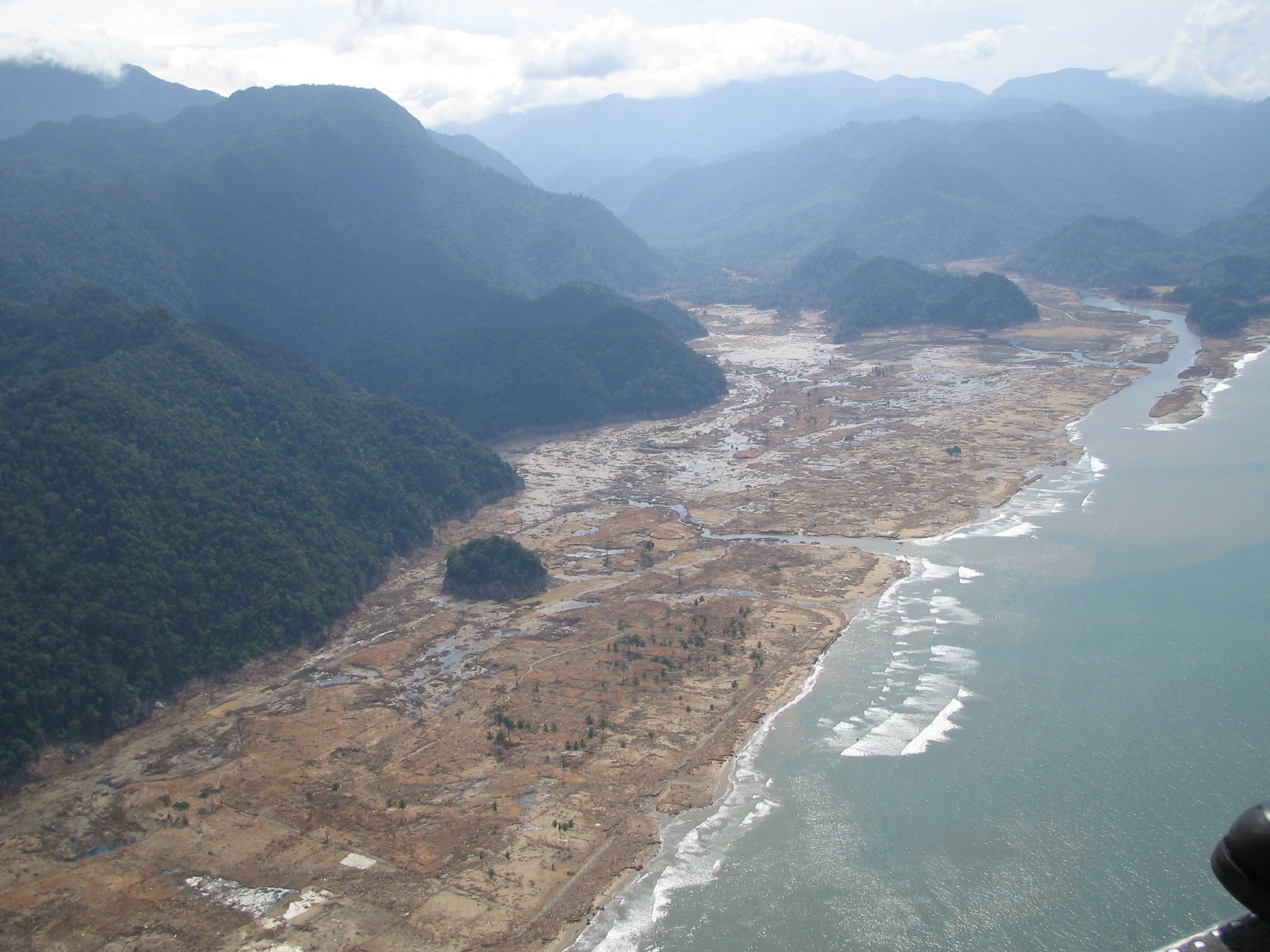
1. **2004 Indian Ocean Tsunami**On December 26, 2004, a catastrophic event unfolded that shook the world. Triggered by an undersea earthquake with a magnitude of 9.1-9.3 off the coast of Sumatra, Indonesia, this colossal tsunami wreaked havoc across several countries bordering the Indian Ocean. The earthquake caused a series of powerful waves that propagated outwards, causing devastation in coastal regions of countries such as Indonesia, Sri Lanka, India, Thailand, and Somalia. It was a disaster of unprecedented scale in modern history.
This devastating tsunami claimed an estimated 230,000 lives in 14 countries, leaving an unimaginable trail of destruction that took years for affected communities to even begin recovering from. The fault zone that caused the tsunami was roughly 1300 km long, vertically displacing the sea floor by several metres along that length. The ensuing tsunami was as tall as 50 meters, reaching 5 km inland near Meubolah, Sumatra. It remains the deadliest tsunami in recorded history, a tragic testament to nature’s raw power.
The tsunami served as a profound wake-up call for the international community, highlighting the urgent need for better early warning systems and comprehensive disaster preparedness measures worldwide. It prompted the establishment of the Indian Ocean Tsunami Warning and Mitigation System, a crucial initiative that aims to prevent future tragedies of such magnitude by providing timely alerts and fostering international cooperation. This event irrevocably changed global disaster response protocols.
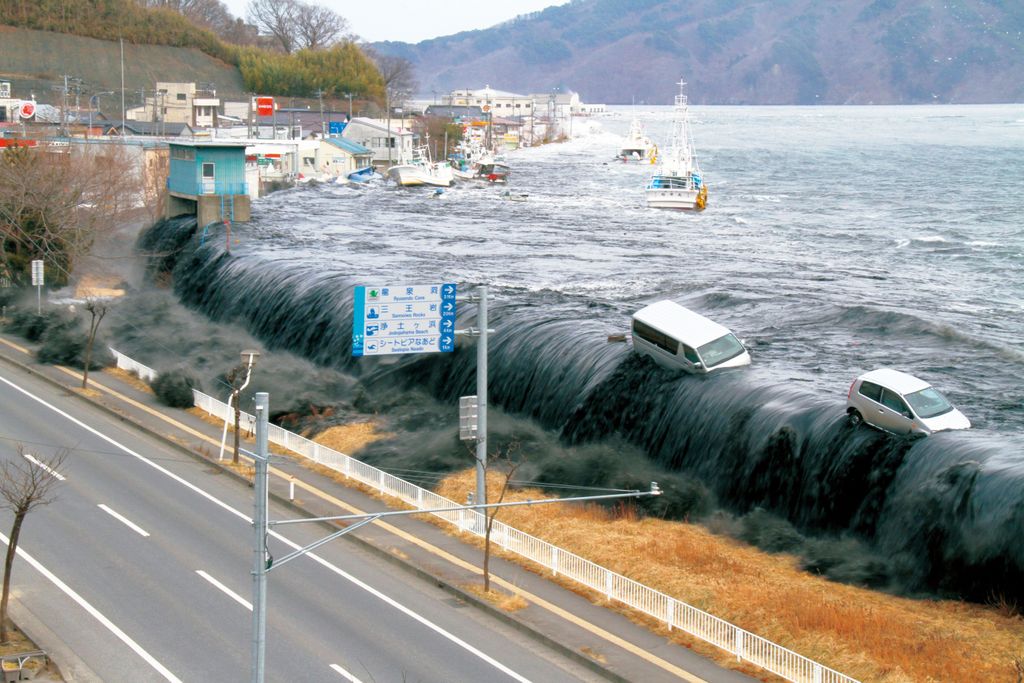
2. **2011 Tōhoku Earthquake and Tsunami**Just over six years after the Indian Ocean tragedy, another catastrophic event, known as the Great East Japan Earthquake, struck on March 11, 2011. Triggered by a magnitude 9.0 earthquake off the coast of Japan, which was the most powerful one to hit Japan and the fourth most powerful recorded worldwide since 1900, it generated a massive tsunami that devastated the northeastern coast of the country. This powerful tsunami, traveling 800km per hour with 10-meter-high waves, swept over the east coast of Japan.
The tsunami caused widespread and catastrophic damage to infrastructure, including the critical Fukushima Daiichi nuclear power plant, which subsequently led to a nuclear meltdown. Over 18,000 people lost their lives, and approximately 452,000 individuals were relocated to shelters, many remaining displaced from their destroyed homes. The World Bank estimated that it could take Japan up to five years to financially overcome the staggering $235 billion in damages, underscoring the immense economic toll of such a disaster.
This event was a stark and sobering reminder of the interconnectedness of natural disasters and the potential for cascading effects, particularly in technologically advanced societies. It prompted a significant global re-evaluation of nuclear power safety protocols and spurred renewed efforts to improve tsunami warning systems and disaster preparedness measures across the globe. The lessons learned from Tohoku continue to inform resilience strategies worldwide.

3. **1960 Valdivia Earthquake and Tsunami**The year 1960 witnessed the most powerful earthquake ever recorded, an extraordinary magnitude 9.5 tremor, which struck Chile on May 22. This seismic titan subsequently triggered a devastating tsunami that radiated outward, spreading across the vast expanse of the Pacific Ocean. Its immense power was felt far and wide, causing significant damage and tragic loss of life in not only Chile but also Hawaii, Japan, and numerous other Pacific Rim countries.
The tsunami waves reached an astonishing 25 meters high in some places, demonstrating the unparalleled energy unleashed by the earthquake. The first tsunami wave impacted Hilo, Hawaii, approximately 15 hours after its origin, with the highest wave at Hilo Bay measured at around 10.7 meters. Nearly 22 hours after the initial earthquake, waves up to 3 meters above high tide struck the coast of Sanriku in Japan, tragically claiming 142 lives.
This catastrophic event highlighted the truly global reach of tsunamis and underscored the critical importance of international cooperation in disaster response and recovery efforts. It spurred significant advancements in seismology and the development of sophisticated tsunami warning systems, crucial tools that have since helped to save countless lives in subsequent events. The Valdivia tsunami remains a benchmark for understanding planetary seismic activity.
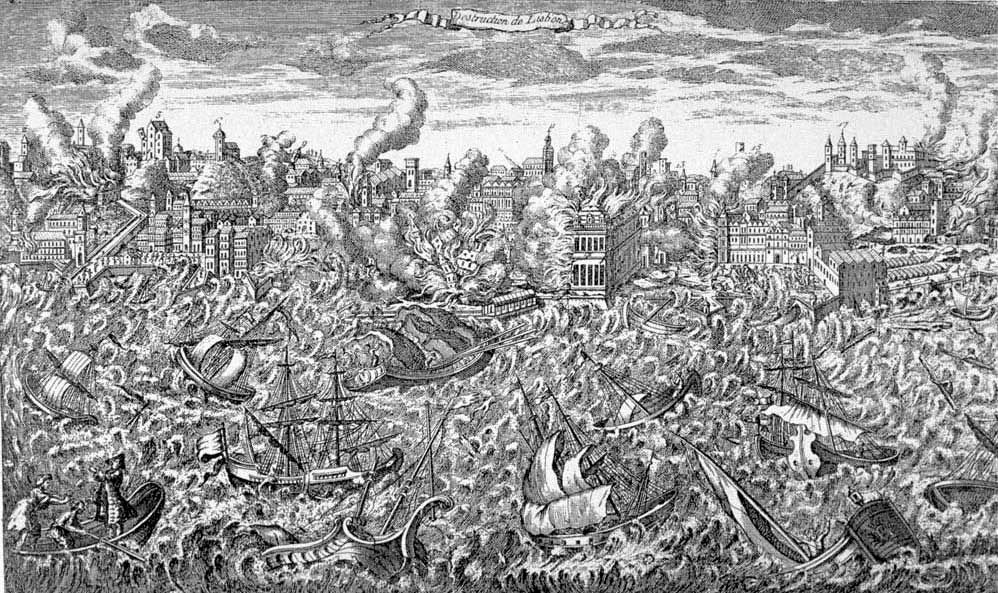
4. **1755 Lisbon Earthquake and Tsunami**On November 1, 1755, a catastrophic earthquake, estimated to be around magnitude 8.5-9.0, rocked the city of Lisbon, Portugal. This powerful tremor caused widespread destruction and immense loss of life. However, the devastation did not stop there. The earthquake triggered a massive tsunami, a series of waves that subsequently struck the coast of Portugal, as well as Spain, Morocco, and other countries.
The resulting tsunami caused even more widespread devastation, with waves reported to have reached astonishing heights of up to 30 meters (65 feet) in some places along the west coast of Portugal and southern Spain. The exact number of casualties from the tsunami is not known, but it is estimated to have killed tens of thousands of people in combination with the earthquake. The tsunami also affected waves as far away as Carlisle Bay, Barbados, where waves were said to rise by 1.5 meters.
The Lisbon earthquake and tsunami had a profound impact on European society and marked a significant turning point in the scientific understanding of earthquakes and their potential to trigger tsunamis. This event sparked increased scientific study into these natural disasters and greatly contributed to the foundational development of early warning systems, laying the groundwork for future advancements in disaster mitigation and preparedness.
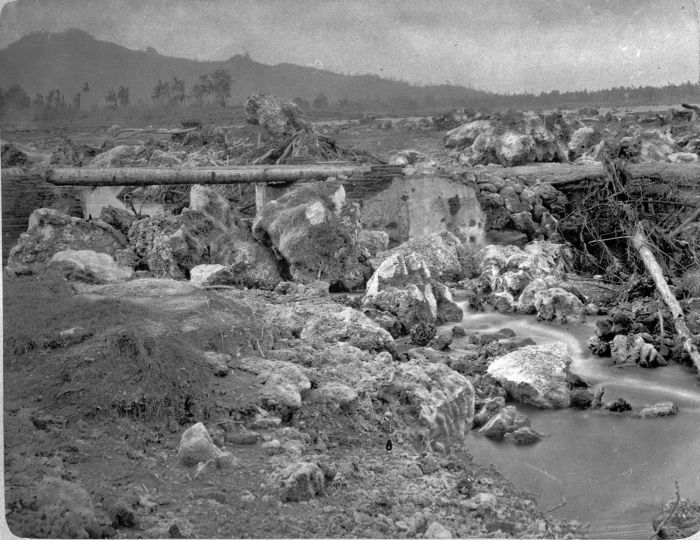
5. **1883 Krakatoa Eruption and Tsunami**The Krakatoa tsunami stands as one of the most infamous tsunamis in history, unique in its terrifying origin. It was caused by the cataclysmic eruption of the Krakatoa volcano in Indonesia on August 27, 1883, which remains one of the most powerful volcanic eruptions ever recorded. The sheer force of this eruption generated multiple waves as high as 37 meters (120 feet), propagating outwards with devastating speed and power.
These monstrous waves demolished the towns of Anjer and Merak in the immediate vicinity, and the resulting tsunami killed over 36,000 people in the surrounding regions. The tsunami traveled across the Indian Ocean, its energy felt as far away as South Africa and Australia. The sea was reported to recede from the shore at Bombay, India, and is even said to have claimed one life in Sri Lanka, illustrating its far-reaching impact.
This tsunami vividly demonstrated the devastating impact of intense volcanic activity on coastal communities, highlighting a different primary cause for these destructive waves. It underscored the critical need for robust volcano monitoring and the implementation of effective early warning systems to mitigate the risks associated with both volcanic eruptions and the tsunamis they can unleash. Furthermore, the eruption and tsunami also had a significant impact on the Earth’s climate, causing a measurable drop in global temperatures for several years.

6. **1964 Alaska Earthquake and Tsunami**On March 27, 1964, Alaska experienced the second most powerful earthquake ever recorded, a magnitude 9.2 tremor known as the Great Alaskan Earthquake. Lasting for approximately four and a half minutes, this colossal seismic event unleashed a catastrophic tsunami that ravaged Alaskan coastal communities. The sheer force of the earthquake triggered a massive tsunami that caused widespread damage and destruction along the coast of Alaska and in other parts of the Pacific.
The tsunami generated by this earthquake reached incredible heights of up to 200 feet in some areas, particularly in isolated bays, and its destructive energy traveled as far as Hawaii, Japan, and Chile. Tragically, the tsunami claimed the lives of 130 people, including 16 in Crescent City, California, a town thousands of miles away. It caused over $311 million in damages, leaving a profound mark on the region and demonstrating the widespread reach of such events.
This tsunami powerfully highlighted the acute vulnerability of coastal communities, even those seemingly distant from the epicenter, to tsunamis generated by distant yet immensely powerful earthquakes. It spurred significant advancements in earthquake and tsunami research and warning systems, particularly leading to the further development and refinement of the Pacific Tsunami Warning Center, a vital institution that continues to safeguard lives across the Pacific.
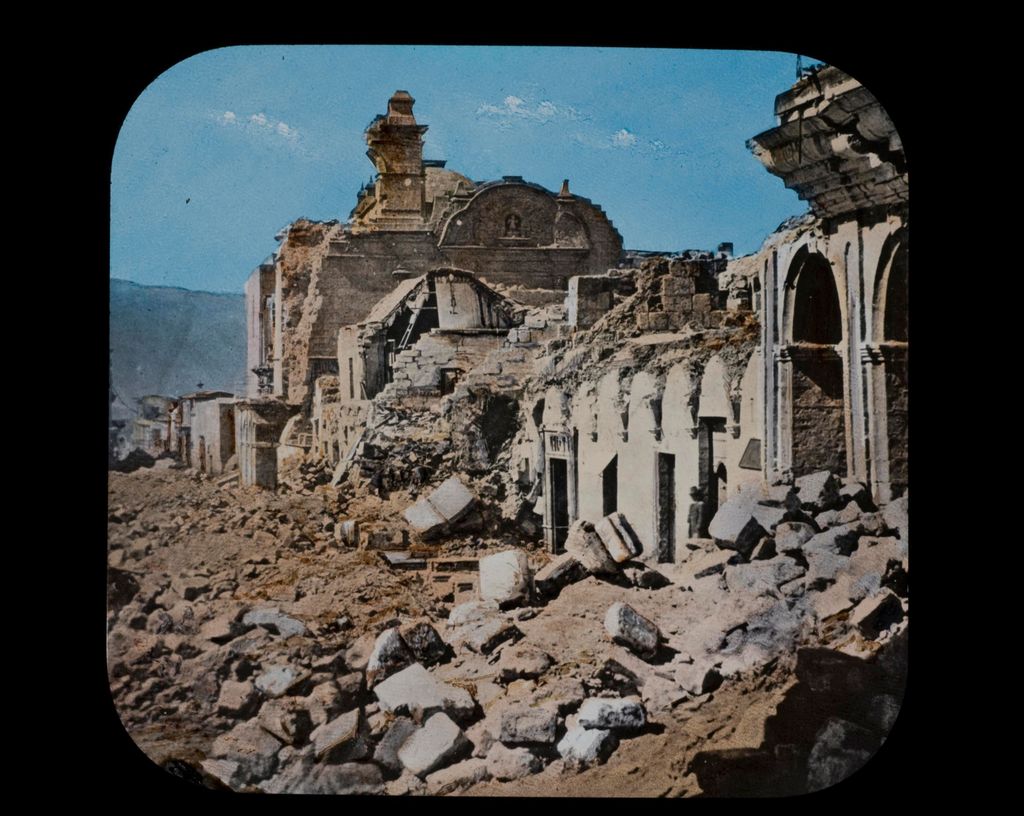
7. **1868 Arica Earthquake and Tsunami**The Pacific Ring of Fire, a region notorious for its seismic activity, once again demonstrated its power on August 13, 1868. A powerful earthquake, estimated to be around magnitude 8.5-9.0, struck the coast of Peru and Chile, triggering a destructive tsunami that affected coastal communities throughout the region. This event was actually caused by a series of two significant earthquakes, making its origin particularly complex and devastating.
The ensuing tsunami waves were reported to be up to 21 meters (40 feet) high in places, and they lasted between two and three days, relentlessly pounding the coastlines. The Arica tsunami caused extensive damage and immense loss of life along the Peru-Chile coast, contributing to a total of 25,000 deaths and an estimated US$300 million in damages caused by the tsunami and earthquakes combined. Its reach was also global, registered by six tide gauges as far off as Sydney, Australia.
This tsunami served as a stark and undeniable reminder of the intense seismic activity within the Pacific Ring of Fire and the perpetual potential for devastating tsunamis in the region. It prompted crucial efforts to improve earthquake and tsunami preparedness in coastal communities throughout South America and beyond, reinforcing the need for continuous vigilance and robust warning systems in seismically active areas.
Having chronicled some of the most impactful tsunamis that shaped modern understanding and disaster response, we now delve deeper into history and explore other colossal waves that left indelible marks on communities and the planet. Each of these events, whether born from immense seismic shifts or unique geological occurrences, offers a compelling narrative of nature’s formidable power and the enduring resilience of human spirit.
Our journey continues, revealing more tales of widespread destruction, remarkable scientific insights, and the crucial evolution of humanity’s preparedness against these awe-inspiring forces. These next seven accounts further underscore the diverse origins and far-reaching consequences of tsunamis across various eras and continents.
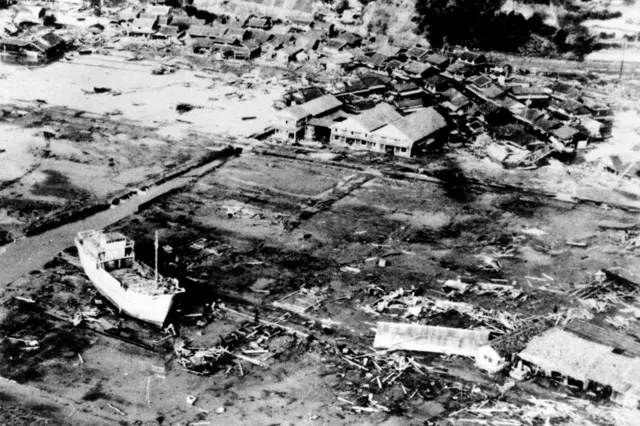
8. **1707 Nankai Tsunami**On October 28, 1707, a colossal earthquake with an estimated magnitude of around 8.6-9.0 struck off the coast of Nankaido, Japan. This immense seismic event unleashed a massive tsunami that relentlessly impacted the Pacific coast of Japan’s Honshu Island, specifically hammering into the coasts of Kyushyu, Shikoku, and Honshin. The sheer force of the waves was devastating, causing widespread destruction across numerous communities.
Reports indicate that the sea waves reached astonishing heights, with some estimated as high as 25 meters, and they devastated roughly 30,000 buildings in the affected regions. The magnitude of the inundation was profound, with the tsunami causing damage up to 4 kilometers inland. Entire villages were swept away, leaving countless inhabitants homeless and forever altering the coastal landscape.
The 1707 Nankai tsunami is tragically etched into history as one of the deadliest natural disasters in Japan, claiming an estimated 30,000 lives. It was reported that approximately a dozen large waves assaulted the coast between 3 p.m. and 4 p.m., with some extending several kilometers inland at Kochi, painting a vivid picture of the relentless onslaught and the immense scale of the devastation.

9. **1896 Sanriku Tsunami**On June 15, 1896, the Sanriku region of Japan experienced a profound catastrophe following a powerful earthquake, initially estimated at a magnitude 8.5 but later refined to 7.6. While the earthquake itself was significant, it was the subsequent tsunami that unleashed truly unimaginable devastation along the Sanriku coast, making it one of the deadliest tsunamis in recorded history.
The waves propagated with terrifying speed and height. At Shirahama, the tsunami was reported to have reached an astonishing height of 38.2 meters (125 feet), a testament to the immense energy unleashed. This monumental wall of water caused catastrophic damage, destroying more than 11,000 homes and leaving communities in ruins across the affected coastline.
The human toll was equally devastating, with some 22,000 people tragically losing their lives in Japan. Furthermore, historical accounts chronicle a corresponding tsunami hitting the east coast of China, where it claimed around 4,000 more lives and inflicted extensive damage on local crops, showcasing the far-reaching impact of this single event and underscoring the interconnectedness of coastal regions across vast expanses of ocean.

10. **1998 Papua New Guinea Tsunami**On July 17, 1998, a significant event, also known as the Aitape Tsunami, unfolded off the northern coast of Papua New Guinea. This disaster was initiated by a 7.0 magnitude earthquake that struck near the town of Aitape. Uniquely, the earthquake triggered a large underwater landslide, which then generated the destructive tsunami, rather than the seismic activity directly displacing the water.
The tsunami waves, driven by the submarine landslide, reached formidable heights of up to 15 meters (50 feet) in certain areas, crashing onto the coastline with immense force. The impact was immediate and widespread, causing catastrophic damage and destruction across the coastal communities of Papua New Guinea. The sheer power of the waves was such that entire villages, including Arop and Warapu, were completely swept away, leaving behind scenes of utter desolation.
Tragically, this event resulted in the deaths of over 2,200 people, with thousands more injured or displaced from their homes and livelihoods. The Papua New Guinea Tsunami served as a stark and painful reminder of the diverse mechanisms that can trigger these destructive waves, notably highlighting the critical need for better early warning systems and enhanced disaster preparedness measures, particularly in regions prone to both seismic activity and submarine landslides.
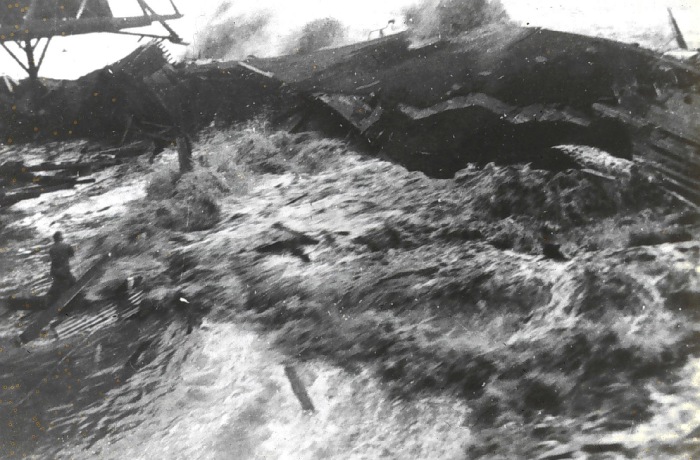
11. **1946 Hilo Tsunami**On April 1, 1946, a devastating tsunami, also widely known as the Pacific Tsunami, struck with little warning, primarily affecting Hilo, Hawaii, and other coastal areas across the Pacific. This colossal wave was generated by an immense earthquake with a magnitude of 8.6, which originated thousands of miles away in the Aleutian Islands of Alaska, demonstrating the remarkable distances tsunamis can travel while retaining their destructive energy.
The tsunami’s impact on Hilo was particularly severe. Waves as high as 35 feet (11 meters) crashed onto the shore, obliterating buildings and homes and causing widespread devastation throughout the town. The destructive force of the waves extended beyond Hawaii, inflicting significant damage and loss of life in other Pacific regions, including parts of Alaska, California, and even Japan, underscoring the interconnectedness of ocean basins in tsunami propagation.
Tragically, the Hilo tsunami claimed the lives of 159 people in Hilo alone, leaving an indelible mark on the community and serving as a critical turning point in global tsunami preparedness. In direct response to this devastating event, the Pacific Tsunami Warning Center (PTWC) was established in Hawaii. This vital institution now serves as a comprehensive warning system for the entire Pacific Ocean, a lasting legacy born from the tragedy of 1946, constantly working to safeguard lives by providing timely alerts for potential future tsunamis.
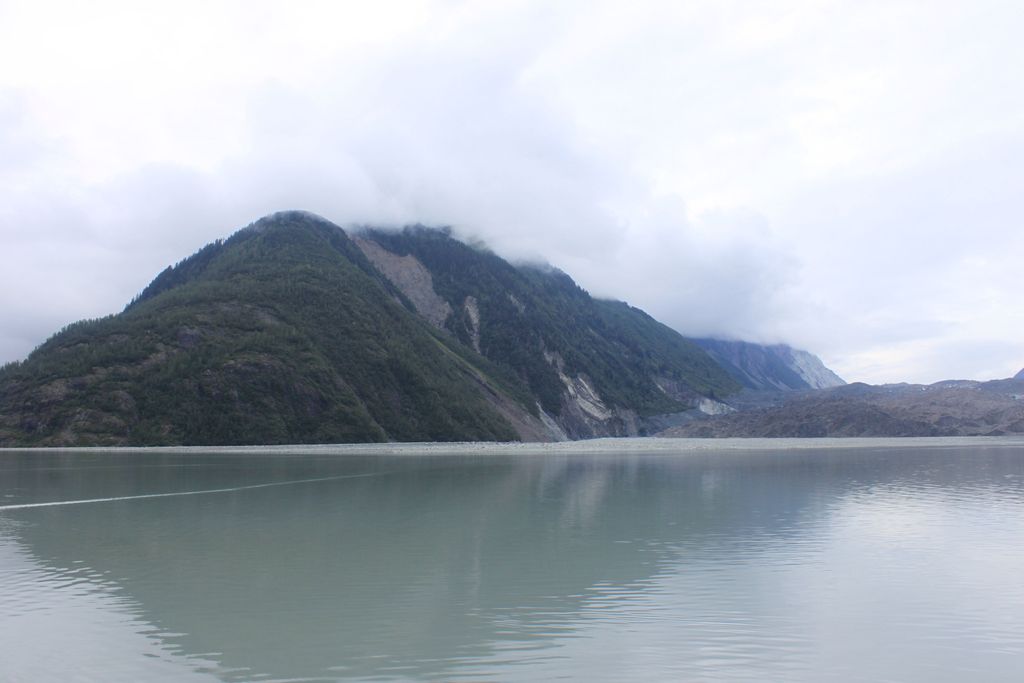
12. **1958 Lituya Bay Tsunami**The Lituya Bay tsunami, which occurred on July 9, 1958, in the remote Lituya Bay, Alaska, stands as a truly extraordinary event in the history of tsunamis, distinguishing itself by generating the highest wave ever recorded. This awe-inspiring phenomenon was triggered by a massive magnitude 7.8 earthquake on the Fairweather Fault, which caused a monumental rockslide of approximately 40 million cubic yards (30 million cubic meters) from a mountainside 3,000 feet (910 meters) above the bay’s northeast shore.
The immense volume of rock plummeting into the waters of Gilbert Inlet created a localized megatsunami that defied conventional understanding of wave heights. This gigantic wave crashed against the southwest coast, sweeping over the spur separating Gilbert Inlet from the main Lituya Bay, and continued its destructive path through the entire bay, even reaching over La Chaussee Spit and into the Gulf of Alaska. The sheer force of the wave was so profound that it stripped all trees and vegetation from the surrounding forested area up to an astonishing height of 1,720 feet (524 meters) above sea level, clearly marking its incredible reach.
Despite the unprecedented scale of this wave, a mere two lives were lost, primarily because Lituya Bay is a highly remote and sparsely populated area. However, the event remains incredibly significant for demonstrating the raw, unimaginable power of tsunamis and, crucially, the potential for truly enormous waves to be generated by landslides, distinct from purely seismic origins. The Lituya Bay tsunami fundamentally redefined scientific understanding of extreme wave phenomena, leading to the new category of ‘megatsunamis’ to describe such rare and colossal events.
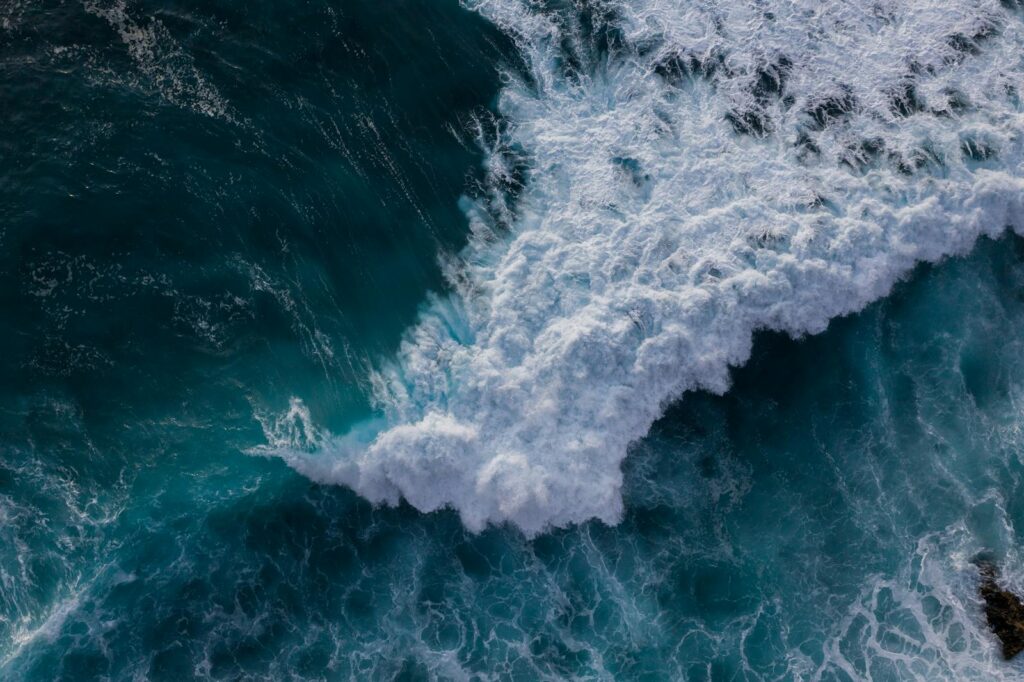
13. **1498 Enshunada Sea Tsunami**In 1498, the coastlines of Japan bore witness to another catastrophic tsunami, this time along the Enshunada Sea. This devastating event, occurring on September 20, was caused by a powerful earthquake, estimated to have been at least magnitude 8.3. The seismic tremor generated enormous tsunami waves that surged onto the shores of the Kii, Mikawa, Surugu, Izu, and Sagami provinces, leaving a trail of widespread destruction in its wake.
The immense power of these waves was such that they fundamentally altered the local geography. Notably, the tsunami was strong enough to breach a spit, a narrow strip of land, which had historically separated Lake Hamana from the open sea. This dramatic geographical change underscores the sheer force of the water. Throughout the affected regions, there were numerous and harrowing reports of homes being inundated by the surging waters and even swept away entirely by the relentless force of the waves.
The human cost of the 1498 Enshunada Sea tsunami was tragic and extensive, with a total of at least 31,000 people losing their lives. This staggering figure solidifies its place among the deadliest natural disasters in Japan’s history, highlighting the profound vulnerability of coastal populations to such formidable seismic and oceanic events centuries ago.

14. **1771 Ryuku Islands Tsunami**On April 24, 1771, the Ryuku Islands of Japan experienced a significant natural disaster, primarily initiated by a magnitude 7.4 earthquake. While the earthquake caused damage across a large number of islands within the region, the most severe and concentrated destruction was tragically confined to Ishigaki and Miyako Islands, which bore the brunt of the subsequent tsunami’s immense force.
The tsunami waves that struck these islands were exceptionally powerful. Although there was historical confusion regarding the exact height, with some accounts citing an improbable 85.4 meters, modern and more accurate estimations place the wave heights at a still formidable 11 to 15 meters (36 to 49 feet). These colossal waves overwhelmed coastal defenses and surged inland, unleashing widespread devastation upon the island communities.
The 1771 Ryuku Islands tsunami left a trail of immense human suffering and structural ruin. It destroyed a staggering total of 3,137 homes, rendering thousands homeless and helpless against nature’s fury. Most tragically, the event claimed the lives of nearly 12,000 people in total, underscoring the extreme vulnerability of island populations to tsunamis and serving as a somber historical record of one of Japan’s most destructive natural calamities.
As we conclude this journey through some of history’s most devastating tsunamis, the echoes of their power resonate through time. Each event, a testament to the Earth’s dynamic forces, has carved its lessons into our collective memory, prompting profound advancements in scientific understanding, early warning technologies, and international collaboration. From the ancient devastation of the Nankai and Enshunada Sea tsunamis to the unique origins of Lituya Bay’s megawave, these chronicles serve as powerful reminders of humanity’s ongoing dialogue with the planet’s raw power. They compel us to remain vigilant, to continue innovating in preparedness, and to honor the lessons of the past as we strive for a more resilient future against these magnificent and terrifying waves.

